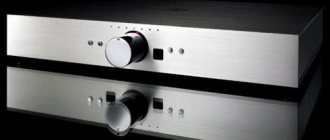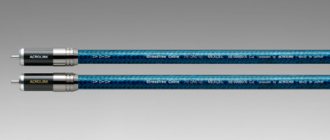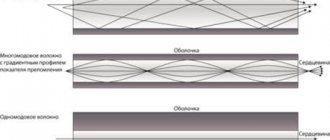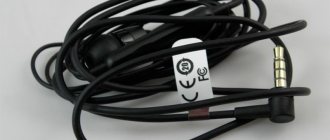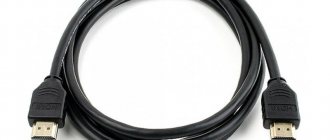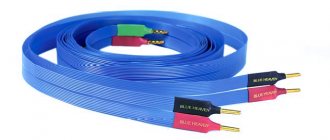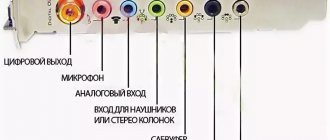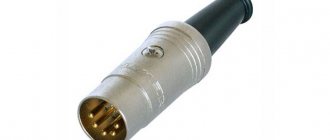ACROLINK - A WORD TO THE ETERNAL DISPUTE
ACROLINK – A WORD TO THE ETERNAL DISPUTE
In the music lover/audiophile environment, there are two extreme points of view. One part of music and equipment lovers claims that cables do not affect anything, and you can connect components even with wire from hangers, while the other part attaches an exaggerated sacred meaning to cables.
The first group, oddly enough, I can understand. For example, owners of mid-budget vintage components from the Golden Era of audio can actually get good results without paying much attention to wires. Mass-produced Japanese equipment of the 80s was created in such a way that it works well even with very simple cables - for example, these. Any more or less normal wire allows such equipment to open up to the full extent of its average strength, and trying to squeeze anything beyond the capabilities of the components using cables that cost more than the component itself is a thankless task, and simply stupid.
Also in the first category are owners of mediocre low-resolution systems, in which replacing cables does not really lead to any changes in sound. But this is already a case from an anecdote - it’s not the wires, but “the whole system needs to be changed.”
I cannot understand the group of sacred “cablemen” even if I try to. Yes, high-resolution systems assembled from top-of-the-line components (vintage or modern) do change the sound depending on the cables, and sometimes significantly. When replacing the cable, the transparency of the music, tonal color, microdynamics and many different other nuances that can be heard by a trained audiophile ear can change in one direction or another. But why turn choosing cables into endless masturbation? Why, having, for example, a frankly bad preamp, spend long hours looking for a cable that will help “open up the sound”, instead of simply replacing a rotten preamp?
I am not writing this text for cable lovers, who will not be helped by anything other than a couple of months on an island far from music. I am writing this for those who have not yet become infected with cable mania, but are already reaching out to the keyboard with curious fingers and typing in the search engine “the best cables for an audio system,” “how to improve sound with wires.” Guys, you are in danger! You may suffer from a severe mental disorder, and instead of listening to music, you will spend hours “listening” to wires. Do not do that! Just remember a few simple tips.
Good wires really help to unlock the potential of the system, but there is no point in going through dozens of them - you just need to buy guaranteed good ones once.
The best cables in terms of price/quality ratio are made by smart home-made workers, as a rule, from German copper wires from decommissioned metallurgical equipment. The interconnects use monocore, and the speaker cables use monocore or Litz wire. Internal textile insulation and external polyethylene insulation is very good. External polyethylene insulation is generally a good sign for a cable. PTFE insulation is also a good option. But PVC insulation is not the best option. This material breaks down over time and oxidizes the internal wiring.
Do-it-yourselfers install branded connectors - most often from Taiwan. Such cables cost no more than $100 for interconnects and $300 for a set of speaker wires. Using approximately the same technology, these craftsmen make good network cables, which are also important. If you are not ready to spend more than $500 on cables for a complete set, buy them from such people, and do not look for anything else at all. It won't be better anyway. I’m not giving the contact of a good master here - if you click on the green banner in the upper right corner, a page will open on which you can easily find him yourself.
Remember that any cable must warm up in the system for at least 12-15 hours! It is wrong to evaluate it earlier, and this is not a “trouble”, but an objective reality.
But what if you have top-end equipment, and still want to install a “branded” one? What to try? The iconic “vanederhul” that is made this way?
Friends, don't worry about it! Three-quarters of branded cables, costing hundreds of dollars, will give you worse results than cables from competent DIYers - tested. The reason is simple - most of the “firm” is made in China from dirty copper, and the purity of German solid wires is as good as the moon - that’s the whole story. Look carefully at this photo - 70% of “branded” high-end cable products do this. Why this lottery? Another 20% of branded cables will give you exactly the same result as master cables, but they will cost an order of magnitude more. Why pay more?
I can name only one company whose cable products are worth the money, and the hundreds of dollars spent on wires are justified. This is Acrolink. Perhaps there are several other companies, the same Furutech, for example, but I have not tested their products, but I tested Acrolink and the result surprised me. I'll tell you more about this test.
To begin with, I will say that cables have been established in my system for a long time. They are all from masters, and I didn’t see any point in changing them for anything else. I tested several times, trying different branded products instead, and there was not a single case where the tested cables improved the sound. To make clear the level of cables that were miserably outperformed by the craftsmen, here is one example . A friend of mine bought these cables in the United Arab Emirates at a central store for some crazy money. We installed it and compared it - the sound immediately became more muddy and crooked, as if some of the frequencies had been cut by an equalizer. The friend was upset, so don’t repeat his mistakes and don’t waste your money.
When the opportunity arose to test the Acrolink cable, I reluctantly agreed. To be honest, I no longer had the desire to waste time to make sure for the thirtieth time that branded cables did not bring anything new. I made a mistake.
The Acrolink 7N-A2030III interconnect is the pre-top cable in the line. Retail price is about $700. The weight and density of the insulation immediately make it clear that you are holding an “expensive thing,” but there were even heavier cables in your hands, which in no way justified this heaviness.
I make the first connection between the Nakamichi 1000 deck and the preamp, and my eyebrows immediately rise in amazement - it feels like I turned on another record or even a different deck. The sound is denser, “meatier” while fully maintaining the natural tonal balance. Maybe the highs have become a little less transparent... Oh, yes, I listen without warming up. I ran the cable for several hours and listened carefully. Incredible! The improvement in the sound of the tape path when connecting the deck with this interconnect was approximately the same as after replacing the Nakamichi LX5 deck with a more top-end Nakamichi 1000. That is, the cable performed at the level of an independent component! The only case in dozens of my tests!
What will happen if you connect this cable to the vinyl path - between the preamplifier and the phono stage?
Nothing. Imagine - absolutely nothing. The sound did not improve in any way and, perhaps, in some nuances even became worse - the color of the mid frequencies became less euphonious. However, color is purely subjective, so I’ll focus on the fact that there were no noticeable changes.
There were none when connecting a digital source with Acrolink - absolutely no changes in the sound.
Only when connecting a cassette deck did the cable provide a noticeable improvement, and there is a clear explanation for this. The output of the tape deck is low-current, and the conductivity of the connecting cable in the section before the preamplifier played a noticeable role. At the same time, the deck reproduced high-quality recordings from reel-to-reel master tapes, and the cable had something to conduct. When connecting the digital path, there was no improvement, because the digital source, in principle, produces a poorer signal than the deck, and the master cable could more than cope with such a signal. The situation is different with vinyl. The phono stage has a very powerful output, and cable conductivity does not play such an important role as in the case of a tape recorder.
I know that for people with only digital music experience, everything written above sounds like nonsense. How is it that a digital source “produces a poorer signal than some cassette deck”? Probably the person just doesn’t have a good DAC. It's not the DAC, it's the poverty of the digital files we all have to deal with.
In order not to be unfounded, I will post here a digitization of the DEEP PURPLE album Who Do We Think We Are? It is made from a cassette that is played back by a Nakamichi 1000 deck. The deck is connected to a Tascam DA-3000 recorder using an Acrolink cable under test. File format DSDIFF 5.6. – get ready to download 1.5Gb. To play, you can download from this link . Listen and compare with any CD. You can even compare it with vinyl.
DEEP PURPLE Who Do We Think We Are? - PART 1
DEEP PURPLE Who Do We Think We Are? - PART 2
On the audiophile music there is a digitization of the same album, made from the same cassette and on the same equipment, but with a different interconnect. If you want, compare. The more powerful bass and dense “meaty” sound of the digitalizations from this page are the merit of Acrolink.
If you don’t want to download anything, just go to my personal consultations and watch the video with my system posted there. I think that once you hear what a cassette deck can sound like, you will understand that the talk about a “poorer digital source signal” is not the ravings of a madman.
Let me summarize the testing. This was a rare case when an expensive cable really justifies its cost. But, as you can see, this does not work in all parts of the system. Of course, if you don’t count money, you can install such cables everywhere and get the guaranteed best result possible. But, if the budget is limited, I recommend doing what I did - first assemble the system with master cables, and then try to use Acrolink selectively and leave it where it really noticeably improves the sound.
The Acrolink company produces a full line of cable products, and by the way, the initial models are not too expensive - for example, $193 for a guaranteed high-quality interconnect and $63 per meter of excellent speaker cable can be considered a reasonable price. If you don’t want to deal with do-it-yourselfers and play the lottery by purchasing dubiously branded products, buy cables from a trusted and reliable manufacturer.
To purchase Acrolink cables at a discount from an official dealer, write to [email protected]

